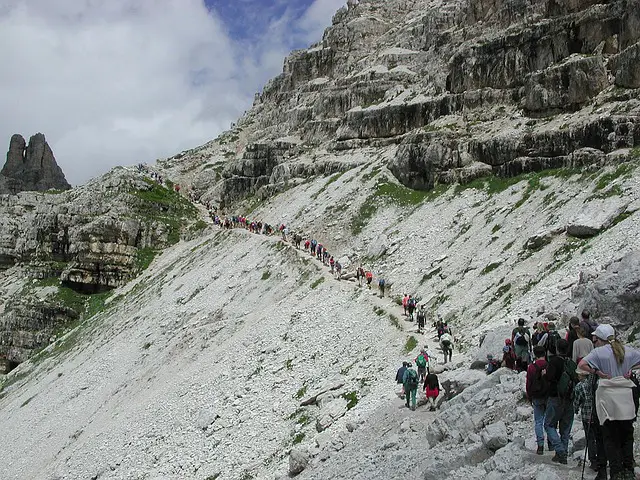Mountain climbing is a thrilling and rewarding adventure that requires careful preparation and the right equipment. One of the most crucial pieces of gear for any climber is the mountain climbing backpack. A well-chosen backpack can make the difference between a successful ascent and a challenging ordeal. In this comprehensive guide, we’ll delve into the essentials of selecting the best mountain climbing backpack, exploring key features, materials, and tips to help you make an informed choice.

Why is a Mountain Climbing Backpack Important?
When you’re scaling peaks and traversing rugged terrains, having a reliable mountain climbing backpack is essential. But why is it so important? The answer lies in its ability to provide efficient storage, comfort, and support for all your necessary gear. From ropes and harnesses to food and emergency supplies, a good backpack ensures that everything you need is within reach and well-protected.
Efficient Storage
A mountain climbing backpack typically offers multiple compartments and specialized pockets that help organize your gear. This organized storage is crucial when you’re in the midst of a climb and need to access items quickly. Look for packs with external attachment points for items like ice axes and trekking poles, as these can free up internal space for other essentials.
Comfort and Support
Comfort is key during long climbs. A well-designed mountain climbing backpack will have padded shoulder straps, a cushioned back panel, and an adjustable hip belt. These features distribute the weight evenly across your shoulders and hips, reducing strain and allowing you to climb more efficiently.
What Features Should You Look For?
Selecting the right mountain climbing backpack involves considering several important features. Here are some key elements to keep in mind:
Size and Capacity
Mountain climbing backpacks come in various sizes, typically measured in liters. The appropriate size for you will depend on the length and difficulty of your climb. For day trips or short climbs, a 20 to 35-liter pack may suffice. For multi-day expeditions, you might need a 50 to 70-liter backpack to accommodate extra gear, clothing, and food.
Durability and Material
The material of your backpack directly impacts its durability and weight. Look for backpacks made from high-quality, weather-resistant materials like ripstop nylon or polyester. Reinforced seams and abrasion-resistant fabric are also essential for enduring the harsh conditions often encountered during mountain climbing.
Weather Resistance
Mother Nature can be unpredictable in mountainous regions. A good mountain climbing backpack should offer some level of water resistance or come with a rain cover to protect your gear from unexpected downpours. Sealed zippers and a water-resistant coating can further enhance your backpack’s ability to withstand the elements.
How to Choose the Perfect Mountain Climbing Backpack?
Choosing the perfect mountain climbing backpack requires thoughtful consideration of your specific needs and preferences. Here are some tips to guide you:
Fit and Adjustability
A proper fit is critical for comfort and functionality. Try on several backpacks, fully loaded with weight, to assess how they feel on your back. Make sure the shoulder straps, hip belt, and sternum strap are adjustable and can be tailored to your body shape. Many packs come in different sizes (small, medium, large) to accommodate various torso lengths.
Weight Distribution
A good mountain climbing backpack should distribute weight evenly to prevent fatigue and discomfort. Look for packs with an internal frame that provides structure and support. Some backpacks feature an adjustable suspension system that allows you to customize the fit and balance the load effectively.
Accessibility
Quick and easy access to your gear is essential during a climb. Backpacks with front-loading or panel-loading designs allow you to access the main compartment without having to unload everything. Additionally, hip belt pockets, side pockets, and top lids provide convenient storage for small items like snacks, maps, and a camera.
Additional Tips for Using a Mountain Climbing Backpack
Once you’ve selected your ideal mountain climbing backpack, pack it wisely. Distribute weight evenly, keeping heavier items close to your back and centered. Secure any external gear to prevent it from shifting during the climb. Regularly inspect your backpack for wear and tear, and make necessary repairs to ensure its longevity.
Conclusion
In the world of mountain climbing, having the right backpack can elevate your experience, providing comfort, organization, and durability. When choosing a mountain climbing backpack, consider the size, material, weather resistance, and fit to ensure it meets your needs. By selecting a backpack with the right features and packing it thoughtfully, you’ll be well-prepared for your next exhilarating adventure. Happy climbing!



